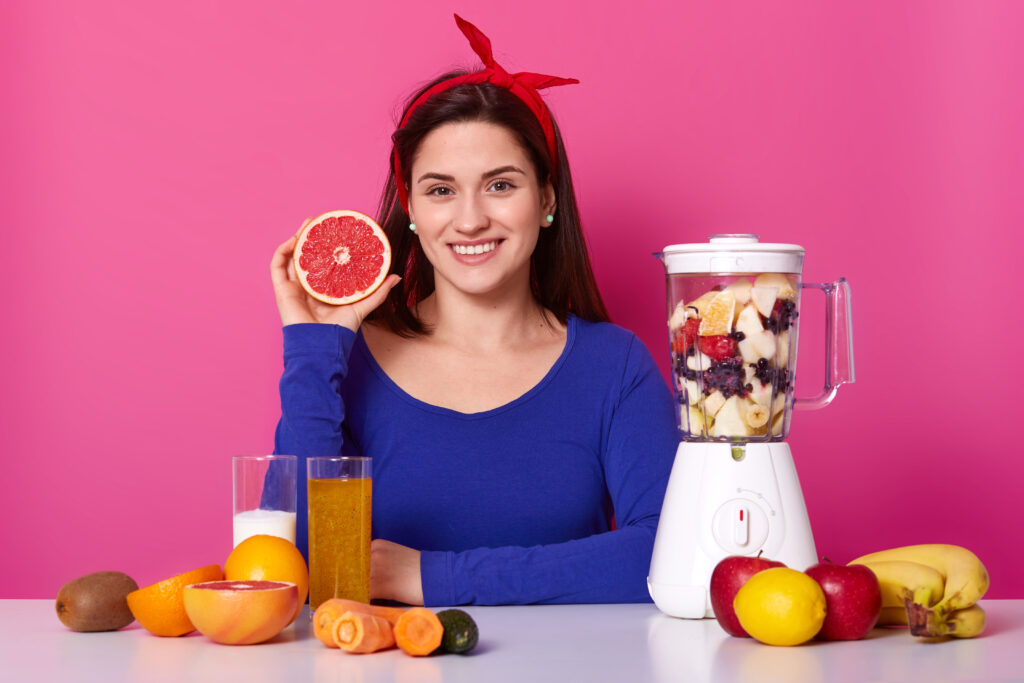Smoothies are a go-to food option for many people. They are fun, easy to make, and nutrient-rich drinks. But it does not turn out perfectly as always. And you might be wondering why my smoothies get foamy. Don’t freak out! Because you are at the right place. Here are all the answers to your problem.

Smoothies can be a healthy alternative to caffeine, like coffee or tea. So you must follow a fool-proof recipe. This way, you can get your ideal smoothie every time. This article will guide you to figure out all the reasons and the solution for you.
Why do my smoothies get foamy?
You might be thinking that it’s only a smoothie. How can it go wrong? But that’s not the case. You have to be careful. Here are some possible reasons it can become foamy:
Too Much Fiber Content
Firstly, check the fruits and vegetables you are adding. They might be high in fiber. Do not use fruits and vegetables with peels. The peels do not dissolve easily and make a separate layer.
Density
Secondly, your ingredients have different densities. The denser components sit at the bottom while the lighter ones keep floating.
Leafy Greens
Leafy green vegetables or fruits are not an excellent choice for smoothies. They produce too much foam.
Over Blending
Check if you are blending your smoothies too much. It makes it bubbly.
Higher Liquid Concentration
Adding too much liquid disturbs the consistency of your drink.
Order Of Ingredients
You might need to add your ingredients in the correct order.
Fruits and vegetables that don’t make a foamy smoothy
So, some fruits and vegetables are not fit for a good texture smoothie. Firstly, avoid fruits with high water content, such as watermelon. It can make your smoothie too watery. Additionally, citrus fruits can make your smoothie too acidic. In comparison, avocados make it too thick and creamy.
Furthermore, vegetables such as cucumbers and celery do not blend well. They can leave chunks in your smoothie. Use fruits and vegetables like bananas, berries, spinach, and kale to avoid these issues. They can blend easily and create a smooth texture.
Tips to prevent smoothies from getting foamy
You can try these tips to blend your ingredients into a fine smoothie:
- If your drink is too runny, add more fruits. The fruits should preferably be frozen. They work better than ice.
- You can also add creamy ingredients. For example, nut butter, soaked oats, or yogurt.
- Try adding protein powder or gluten-free flour, e.g., coconut flour.
- Use Chia seeds or cottage cheese to increase richness.
- Another helpful tip is to add a pinch of spice or salt.
- Make sure to peel your fruits or veggies first.
- Do not use too much water or liquid. You can add saturated fruit juices as well.
- Additionally, add your ingredients in a sequence. Add lighter ingredients like spinach before heavier ones.
- Never over-blend your smoothies. Always run at a slower speed before turning the switch off. It helps in anti-foaming.
- An even better approach is to use a stabilizer like guar gum.
How to remove foam from smoothies
If your drink has a lot of foam, don’t worry. As you can easily remove it. You can try the following:
- Scoop out the extra foam.
- Another way is to blend on a slow setting for a bit.
- Leave the drink in the blender for a short while. It reduces the foam.
- Stir it in your glass using a spoon.
- A spatula can also help to keep all that froth away.
Wrapping Up!
In conclusion, smoothies are everyones favorite. Sometimes they don’t turn out as impressive as you want. So at such times, you can use our tips and tricks. These will help find the reason and fix it like a pro.
So now you know your answer to ‘Why do my smoothies get foamy?’. Keep following our blog for more exciting posts about Food Technology.
Frequently Asked Questions
Q: Why do my smoothies get foamy?
A: There are several reasons why your smoothies might get foamy. These include the type of ingredients used and the blending process. Moreover, the temperature of the components makes a frothy texture.
Q: What types of ingredients can cause foaming in smoothies?
A: Certain ingredients, such as bananas, avocados, and yogurt, have a high content of natural starches and proteins. They can cause foaming when blended.
Q: Does the blending process affect the foaminess of my smoothie?
A: Yes, blending too much or too fast can incorporate air into the mixture, causing foaming.
Q: Can the ingredients’ temperature affect foaminess?
A: Yes, warmer ingredients can cause more foam. Cold ingredients are a better choice. Heat causes air bubbles to expand.
Q: How can I prevent my smoothies from getting foamy?
A: You can reduce the foaminess of your smoothies by blending at a lower speed. Also, use frozen fruit or vegetables instead of ice. Always add ingredients gradually. Most importantly, use a blender with a tamper. The tamper pushes components down toward the blades.
Q: Can adding a liquid to my smoothie help reduce foaminess?
A: Yes, adding a liquid such as milk, water, or juice can help reduce foaminess. These ingredients provide a medium for the elements to blend more evenly. But add in a balanced quantity.
Q: Can I still drink a frothy smoothie?
A: Yes, foamy smoothies are still safe to drink. They can be as delicious as a non-foamy smoothie. However, some people may find the texture of a frothy smoothie less desirable.